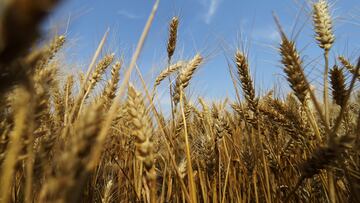Latest News
Global wheat production: How will the Russia-Ukraine war impact food exports?
Ukraine and Russia account for around a quarter of global wheat production, how will the conflict impact food markets?

Food insecurity and hunger are two different concepts used to evaluate the level of food security for individuals, households, or populations. To be food insecure means that a person lacks “regular access to enough safe and nutritious food for normal growth and development and an active and healthy life.” On the other hand, hunger refers to the discomfort and physical pain the body feels when going without food.
Before the covid-19 pandemic began, hunger and food insecurity were on the rise. In 2020, the number of people who lacked access to adequate food increased by 320 million to 2.37 billion people. The Food and Agriculture Organization (FAO) estimates that in the same year, anywhere between 720 and 811 million people experienced hunger.
Before the Russian invasion of Ukraine, the agency estimated that the pandemic would have a lasting impact on hunger, with an additional thirty million people expected to suffer because of its economic effects. Concerns over how the war and economic sanctions could impact agricultural markets have many worried that the conflict could lead to significant increases in hunger.
Before the war Ukrainainas paid up to fifty percent of their incomes on food, and scarcity brought on by the conflict has not helped to stabilize prices. At the international level, the invasion comes as food prices in Afghanistan, Ethiopia, Syria, and Yemen, reach “record highs.” With all these variables coming together, “the number of people who are food insecure is soaring.”
What are the main crops grown in Ukraine?
Ukraine is a major producer of wheat, sunflower seed oil, cereals, and other agricultural products. Ukraine was the fifth largest grain producer in 2020 and together with Russia make up around a quarter of global wheat production. In 2020, Egypt ($1.22B), Indonesia ($544M), Pakistan ($496M), Bangladesh ($295M), and Lebanon ($239M) represented around fifty percent of all Ukrainian wheat exports.
Due to the conflict, the FAO estimates that one‐third of the nation’s “crops and agricultural land may not be harvested or cultivated in 2022.”
This combined with possible fertilizer shortages from Russia could lead to shortages that may impact hunger later this year and next. Russia is the largest fertilizer exporter in the world and sanctions have crippled their market and sent prices souring as countries compete in other export markets. In Peru, the annual rice production has been disrupted as farmers have had to pay nearly four times as much for fertilizers and other soil nutrients.
The winter crop harvest planted in October 2021 will be ready in June and July, and with over a quarter of people displaced within and outside of the country, there could be severe disruptions. Many workers have relocated and the burden has fallen to women as men are off fighting. Recently the FAO has renewed calls for more funding to support small and medium-sized farms. They are currently seeking around $120 million to provide direct cash transfers to farmers who “need cash to procure inputs and services for food production and maintain their farming operations.”






